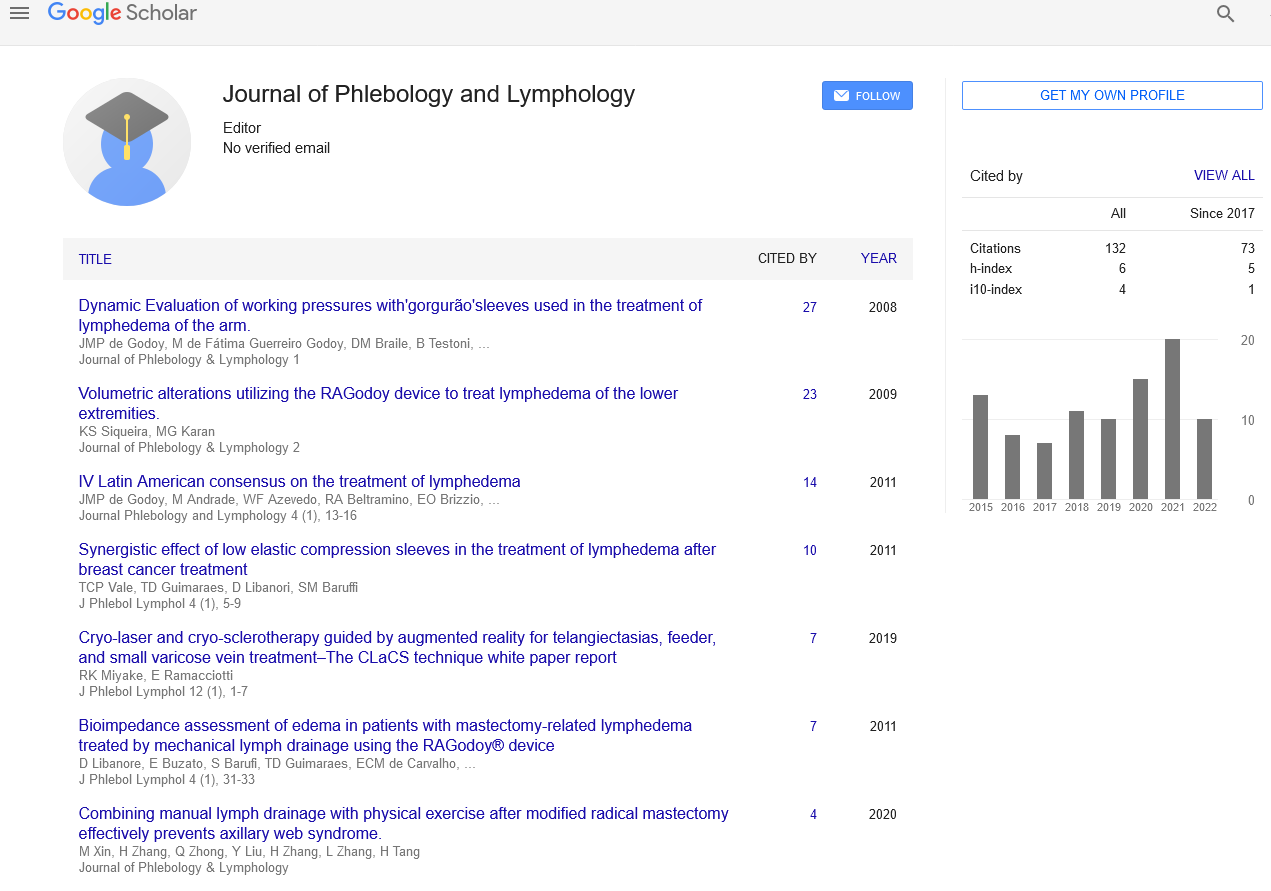Embryology of the jugular system
Received: 08-Apr-2021 Accepted Date: Apr 22, 2021; Published: 29-Apr-2021, DOI: 10.37532/1983-8905.2021.14(3).3
Citation: Seyoum TM. Embryology of the jugular system. J Phlebol Lymphol 2021; 14(3):e003
This open-access article is distributed under the terms of the Creative Commons Attribution Non-Commercial License (CC BY-NC) (http://creativecommons.org/licenses/by-nc/4.0/), which permits reuse, distribution and reproduction of the article, provided that the original work is properly cited and the reuse is restricted to noncommercial purposes. For commercial reuse, contact reprints@pulsus.com
Description
The jugular vein is an all around perceived construction in both the lay and the clinical local area. Different expressions utilized by people identifying with the jugular veins incorporate such proclamations as "go for the throat," "hurt deeply," "slice to the throat," and "did it get the throat?" The jugular venous framework is the significant seepage framework for the head and cerebral designs. Table 16-1 shows a few contemplations in regards to the jugular veins. From the time one enters clinical school, the doctor is made mindful of the jugular framework. The left and right outer jugular veins channel into the subclavian veins. The inner jugular veins get together with the subclavian veins all the more medially to shape the brachiocephalic veins. At long last, the left and right brachiocephalic veins join to frame the predominant vena cava, which conveys deoxygenated blood to the correct chamber of the heart. The inside jugular vein is shaped by the anastomosis of blood from the sigmoid sinus of the dura mater and the basic facial vein. The inward jugular runs with the regular carotid course and vagus nerve inside the carotid sheath
Veins are found in both the shallow and the more profound tissue levels separated by belt and are associated transfascially by venous securities. Valves help direct the venous blood the proper way as it gets back to the heart. The bigger veins, for example, the throat and the vena cava have less or no valves, however most different veins have at least one valves isolated by a couple of centimeters. Histologic assessment of the veins shows the intima, which comprises of the endothelium, the sub endothelial connective tissue, and in the bigger veins, an inside versatile film; a media shaped by smooth muscle cells generally masterminded in groups intermixed with sinewy organizations that might be dynamic and contractile, feeder veins with more vulnerable and more slender dividers, and collagen and flexible filaments in different sums relying upon the vein size and area, and an adventitial layer around these vessels that conveys the vasa vasorum (through the free connective tissue, nerve strands, and the lymphatic framework. The veins may have a venous sheath encircled by slim filaments. Shallow veins are situated in the epifascial plane and held set up by a laminar framework that shields them from extending and tearing. As a bradytrophic framework, the veins are additionally ready to get nourishment from their endoluminal side as oxygen-loaded and nutritious blood passes
As ahead of schedule as 3 to about a month of incubation, hatchlings build up a combination of vascular designs. The vitelline veins return inadequately oxygenated blood from the yolk sac, and the umbilical veins convey placental oxygenated blood to the incipient organism. At about a month and a half incubation, the IJV and EJV are creating and joining through proceeded with blend and spaces of relapse of different venous channels. By the seventh week, the significant veins that channel the upper trunk are creating from the foremost and back cardinal veins, framed from a unification and extension of venous lakes or unpredictable fine organizations into the conclusive veins. As the combined front and back cardinal veins conveying inadequately oxygenated blood create, they join to frame the normal cardinal veins as the fundamental venous seepage of the creating incipient organism body to deplete into the sinus venosus (the venous finish of the heart). The correct foremost cardinal vein leads to the privilege IJV and EJV, which join with the privilege subclavian vein to frame the privilege innominate (brachiocephalic) vein. The left brachiocephalic vein (framed by the intersection of the left inner throat and left subclavian vein) at that point associates the left IJV (shaped from the left front cardinal vein) to the privilege IJV vein between the seventh and tenth long stretches of incubation to shape the predominant vena cava (SVC). The correct foremost cardinal vein and accordingly the privilege IJV depletes straightforwardly into the SVC, which purges into the correct chamber. Due to the numerous early channels and the quantity of potential alternatives accessible, there is a lot higher rate of anatomic varieties in the venous framework than there is in the blood vessel framework, prompting different innate anatomic irregularities in grown-ups. Consequently, the jugular venous blood may deplete into a twofold SVC or into a solitary left SVC depleting into the coronary sinus. Typically, the proceeded with extension and development of the chest area venous framework and the joining of the subcardinal veins of the lower body prompts the advancement of the venous seepage into the correct heart by means of the SVC and mediocre vena cava (IVC).





